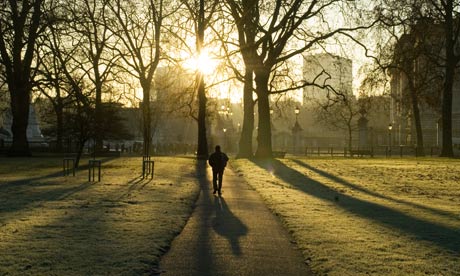
Predominantly white neighbourhoods have 11 times more green space such as parks, gardens and playing fields than those where 40% of residents are black or ethnic minority, new research from a government agency shows.
The inequality between ethnic mixes seen in local environments is even more stark than those in schooling, crime, housing, jobs and health, according to Cabe, the government's advisory body on architecture, urban design and public space.
"If you live in an affluent suburb you are also likely to have an above average quantity of good parks near you. On the other hand, if you live in a deprived inner city ward with high density housing you might have many small, poor quality green spaces but you are unlikely to have access to large green spaces or good quality green space," said the report's authors.
"It's shocking that there are these differences," said Danny Dorling, professor of human geography at Sheffield University. "We are unable to manage our urban green space the way we did in Victorian times. We have followed the American model of inner cities and privatised public space. All the green space in social housing has been tarmacked over. It's shocking. But local authorities could make dramatic improvements very easily."
The research found that people's level of physical activity and health was directly related to affluence and the quality of green space. "The higher the quality of green space, the more likely it is to be used. In the most deprived wards only 40% of adults engaged in even moderate physical activity compared with nearly 60% in the most affluent wards.
Half of people interviewed said they would do more exercise if local green spaces were improved. "If you improve the quality and increase the quantity of urban green spaces it was likely that you will improve public and mental health," said the report.
The differences between ethnic groups was most marked when people were asked how satisfied they were with their green spaces and parks. More than 70% of people in affluent, predominantly white wards said they were satisfied compared with 50% in wards where more than 40% of the population came from black or minority ethnic groups.
The British research tallied with studies conducted with more than 28,000 people in the US where the quality of the built environment was one of the most important factors contributing to community satisfaction.
Cabe recommended there should be more scope for communities to take over temporarily vacant land, and that local authorities responsible for green spaces should work with voluntary groups to make it easier for people to improve the green spaces on their doorsteps.

